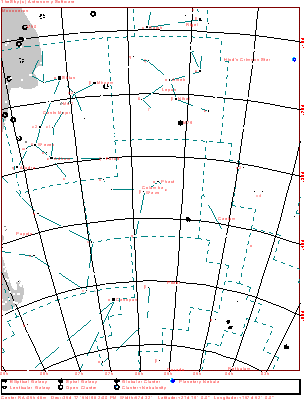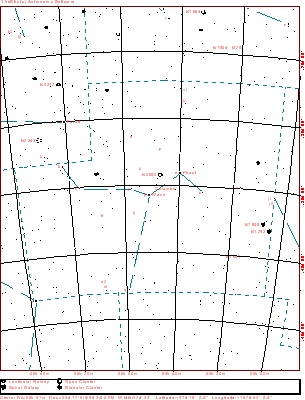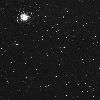
| Home | Deepsky Atlas | TheAstronews | Links | Solar System | ||||||

Hawaiian Astronomical SocietyConstellations: Columba -- Bringing a sign of Peace |
||||||||||
At the end of forty days Noah opened the window of the ark that he had made and sent out the raven; and it went to and fro until the waters were dried up from the earth. Then he sent out the dove from him, to see if the waters had subsided from the face of the ground; but the dove found no place to set its foot, and it returned to him to the ark, for the waters were still on the face of the whole earth. So he put out his hand and took it and brought it into the ark with him. He waited another seven days, and again he sent out the dove from the ark; and the dove came back to him in the evening, and there in its beak was a freshly plucked olive leaf; so Noah knew that the waters had subsided from the earth. Then he waited another seven days, and sent out the dove; and it did not return to him any more. (Genesis 8:6-12)
In the above passage, the mention of the raven belongs to the P source. The olive branch, or leaf in the dove's beak has become an almost universal symbol of peace. In this story, it symbolizes the ending of divine anger at the human race, a sign of peace between God and the human race.

Click the map for a 916x1200 version of the above. Click here for a map better suited for use in the field.

This a more detailed view of the constellation. The map displays stars to magnitude 10, and deepsky objects to magnitude 12. Click here for a map better suited for use in the field.
 90k JPEG NGC1851 (Bennett 32, Caldwell 73) in south-west Columba is one of Dreyer's remarkable objects. A globular cluster described as very bright (mag. 7.3), very large (11'), round and very concentrated at the core, he none-the-less calls it extremely resolvable. A number of mag 14-15 galaxies shine to the west and south. From the Digital Sky Survey. 90k JPEG NGC1851 (Bennett 32, Caldwell 73) in south-west Columba is one of Dreyer's remarkable objects. A globular cluster described as very bright (mag. 7.3), very large (11'), round and very concentrated at the core, he none-the-less calls it extremely resolvable. A number of mag 14-15 galaxies shine to the west and south. From the Digital Sky Survey.
|
 64k JPEG NGC1792 (Bennett 29) is a spiral galaxy that lies near the western border of Columba with Caelum. It lies 2.5° south of Gamma 1 Caeli. Dreyer describes it as very bright (mag. 10.7), very large (5.2'x2.6'), moderately extended (p.a. 314°), gradually brightening a little toward the middle. He also calls it resolvable. This may reflect Hershel's comments that he saw "several stars in it." A 3" shows it easily. At 12" and up, the galaxy appears mottled. 64k JPEG NGC1792 (Bennett 29) is a spiral galaxy that lies near the western border of Columba with Caelum. It lies 2.5° south of Gamma 1 Caeli. Dreyer describes it as very bright (mag. 10.7), very large (5.2'x2.6'), moderately extended (p.a. 314°), gradually brightening a little toward the middle. He also calls it resolvable. This may reflect Hershel's comments that he saw "several stars in it." A 3" shows it easily. At 12" and up, the galaxy appears mottled.
NGC1808 (Bennett 31) lies just 40' to the north-east. Dreyer's description says: Bright (mag. 10.8), large (6.4'x3.9'), extended (p.a. 132°, with a fairly abruptly brighter middle.
Image from the Digital Sky Survey.
|
If you have any questions about the Hawaiian Astronomical Society
please
(link requires javascript).